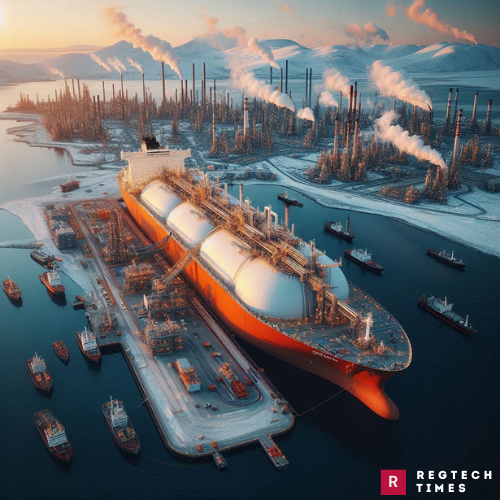In a notable development amidst ongoing geopolitical tensions, a cargo ship was recently spotted at Russia’s Arctic LNG 2 terminal, a facility under stringent US sanctions. This sighting raises questions about Russia’s efforts to circumvent these sanctions and sustain its liquefied natural gas (LNG) exports, a critical revenue stream for the nation’s wartime economy.
Background on Arctic LNG 2 and US Sanctions
The Arctic LNG 2 project, led by Novatek, is a major component of Russia’s strategy to expand its LNG exports. Initiated in December, the project sought to boost Russia’s LNG production in conjunction with the already established Yamal LNG project. However, the US imposed sanctions on Arctic LNG 2 in response to Russia’s full-scale invasion of Ukraine in 2022. These sanctions have hampered the project’s ability to secure vessels necessary for LNG transportation, effectively stalling its exports.
Satellite Imagery and Vessel Identification
On August 1, satellite imagery revealed a significant activity: a vessel, approximately 280 meters in length, docked at the Arctic LNG 2 terminal. The flaring observed in the imagery suggested a reactivation of operations at the site, indicating that Russia is attempting to circumvent the sanctions and resume LNG exports.
The Role of the ‘Dark Fleet’
The identified vessel supports the theory that Russia is building a “dark fleet” of LNG carriers to evade sanctions. These vessels, often acquired through intermediaries and registered under flags of convenience, aim to obscure their origins and intentions. The dark fleet strategy mirrors Russia’s approach in the oil sector, where similar tactics have been employed to evade sanctions on crude oil exports.
The Case of the Pioneer
The vessel observed at the Arctic LNG 2 terminal corresponds in size to the Pioneer, a Palau-flagged LNG tanker. Purchased by its current owner in April, the Pioneer is believed to be part of Russia’s dark fleet. Positional data from the Pioneer’s crew indicated the vessel had been sailing in circles in the sea north of Norway since late July. However, radar imagery from the European Space Agency’s Sentinel-1 satellite failed to detect any vessels at these reported locations, suggesting deceptive maneuvers aimed at evading detection.
Response from Stakeholders
Requests for comments from the managers of the Pioneer, Ocean Speedstar Solutions, and its owner, Zara Shipholding, have gone unanswered. Zara Shipholding, which owns no other vessels, directs all inquiries to Ocean Speedstar, adding another layer of opacity to the situation.
Importance of LNG to Russia’s Economy
LNG continues to be a crucial source of revenue for Russia, particularly following the reduction in traditional pipeline exports to Europe. The Arctic LNG 2 project was designed to enhance this revenue stream. While the European Union and some Asian countries have not imposed direct sanctions on Russian LNG imports, the EU has introduced measures to restrict the unloading of Russian LNG at its ports, further complicating Russia’s export efforts and forcing it to resort to covert operations.
Broader Implications of Sanctions Evasion
The emergence of a dark fleet in the LNG sector reflects a broader trend where sanctioned states increasingly rely on shadowy tactics to maintain their economic lifelines. By utilizing vessels that can hide their movements and origins, Russia aims to keep its LNG flowing to markets willing to purchase it, thereby sustaining its economy during a period of heightened international pressure.
The sighting of a cargo ship at the Arctic LNG 2 terminal is more than just a logistical maneuver; it is a testament to the lengths Russia is willing to go to circumvent international sanctions and sustain its economy amid geopolitical strife. As the US and its allies continue to tighten the economic noose, Russia’s tactics become more sophisticated and elusive. The international community will need to respond to these covert operations with increased vigilance and adaptive strategies to ensure the effectiveness of sanctions.
The recent activity at the Arctic LNG 2 terminal highlights the ongoing cat-and-mouse game between sanctioning bodies and sanctioned entities. The evolving situation highlights the challenges and complexities of enforcing sanctions in a globalized world where economic and geopolitical interests often clash.


